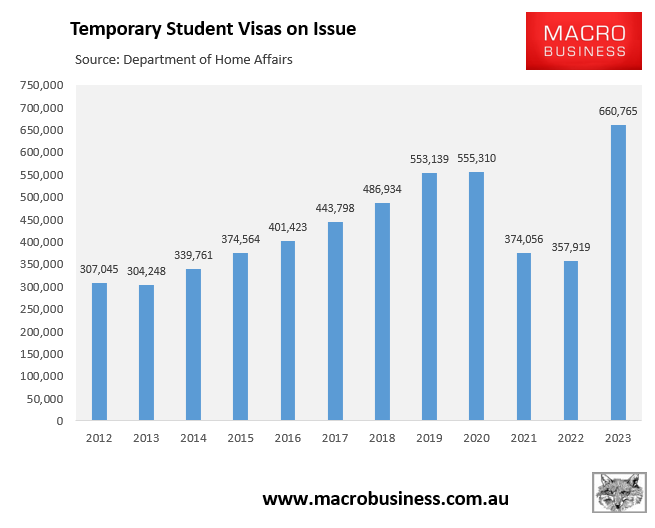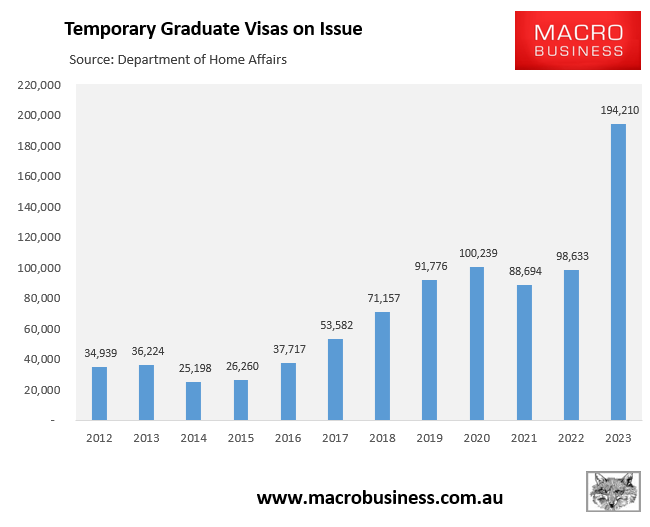The Albanese Government regularly laments that Australia’s migration system has created a large pool of long-term temporary migrants in Australia.
Yet under their watch, the stock of temporary migrants (excluding visitors) hit an all-time high 2.25 million in August, according to the Department of Home Affairs:

The main driver of the surge in temporary visas are international students and graduates.
Temporary student visa numbers had ballooned to 661,000 in August:

Whereas temporary graduate visas has swelled to 194,000 in August:

This means that there were around 855,000 people in Australia on either a student or graduate visa in August.
In turn, roughly one in 30 people in Australia were on either one of these visas – an extraordinary number.
Indian students and graduates have been a significant driver of the increase in temporary visa numbers in Australia.
The below pivot table from the Department of Home Affairs shows the growth in Indian temporary visas on issue:

Between June 2022 and August 2023, Indian student visas on issue rose by 53,300 to 115,900, whereas Indian graduate visa numbers roughly doubled 72,100.
The growth in Indian temporary migrants augers badly for the Albanese Government’s wishes to reduce the numbers of long-term temporary migrants in Australia.
The latest migration data by source country from the Australian Bureau of Statistics (ABS) only goes to 2021-22.
It shows that India dominated net overseas migration into Australia:

In part this reflects stronger arrivals from India:

But it also reflects the fact that Indians are reluctant to leave (unlike Chinese temporary migrants):

This is evidence of the view that Indian students primarily come to Australia seeking work rights and residency. And they will often enrol in dodgy courses to get their foot in the door.
This poses problems for the Albanese Government given it has recently signed two migration pacts with India that, among other things, grants:
- Five year student visas, with no caps on the numbers of Indians that can study in Australia.
- Indian graduates of Australian tertiary institutions on a student visa can apply to work without visa sponsorship for up to eight years.
- Australia will recognise Indian vocational and university graduates to be “holding the comparable AQF qualification for the purposes of admission to higher education”.
- Australia will recognise Indian vocational and university graduates to “to be holding comparable Australian qualifications for the purposes of general employment, where such qualifications are required”.
These pacts will very likely turbo-charge the flows of Indians to Australia, the overwhelming majority of whom will work and live in Australia long-term.
In other words, the Albanese Government has ensured that the numbers of long-term temporary migrants in Australia will grow.

